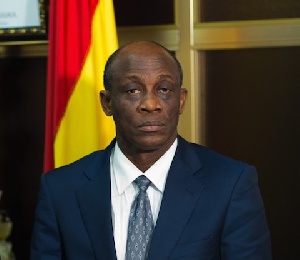 Seth Terkper, Finance Minister
Seth Terkper, Finance Minister
Hopes that the central bank could cut its long held policy rate as its Monetary Policy Committee (MPC) meets, have been blunted by a marginal rise in inflation for the past month, fueled by fears among traders that the cedi could take a hit in the run up to the December polls.
Inflation for August inched up to 16.9 percent from 16.7 percent, a situation that is likely to clog the wheels of the central bank.
Before the Ghana Statistical Service (GSS) announced the August inflation figure, the consumer price index had declined from 18.9 percent in May to 16.7 percent in July, prompting calls on the Bank of Ghana to loosen the monetary stance on the back of a stable inflation.
But Wednesday’s announcement saw inflation rise for the first time in three months after a largely inconsistent performance in the first half of the year.
The Ghana Statistical Service, which tracks inflation, said it suspected the rise resulted from traders who are hiking prices because they fear the local currency would struggle against the US dollar ahead of the polls, which is less than three months away.
Given that the disinflation process has been haltered, the MPC will likely freeze the rate at the current 26 percent for the sixth consecutive time – since November 2015.
This move will be influenced by the fact that the inflation outlook, despite the marginal increase, is not worrisome at this stage, and given that there has not been any significant build up in disruptive demand pressures to pose significant risks to inflation.
Also, policy easing will most likely not be on the cards in 2016 because the BoG is nowhere near a comfort zone when it comes to inflation. It expects headline inflation to move within the medium target band of 8±2 percent in the third quarter of 2017, against earlier projections of mid-2017.
At its last MPC meeting, the BoG said its inflation target will remain anchored on monetary and fiscal policy tightness, stability in the local currency and expected slower food price increases with the onset of the harvest season.
Historically, in an election year, the central bank’s policy rate has hardly been reduced, partly because there is always some nervousness about how the fiscal side will pan out.
However, if the 2016 GDP growth estimate of 4.1 percent is anything to go by–and provided fiscal slippage is avoided— “then we should not be expecting the kind of hyper-economic activity associated with past election years to occur this year,” one analyst said.